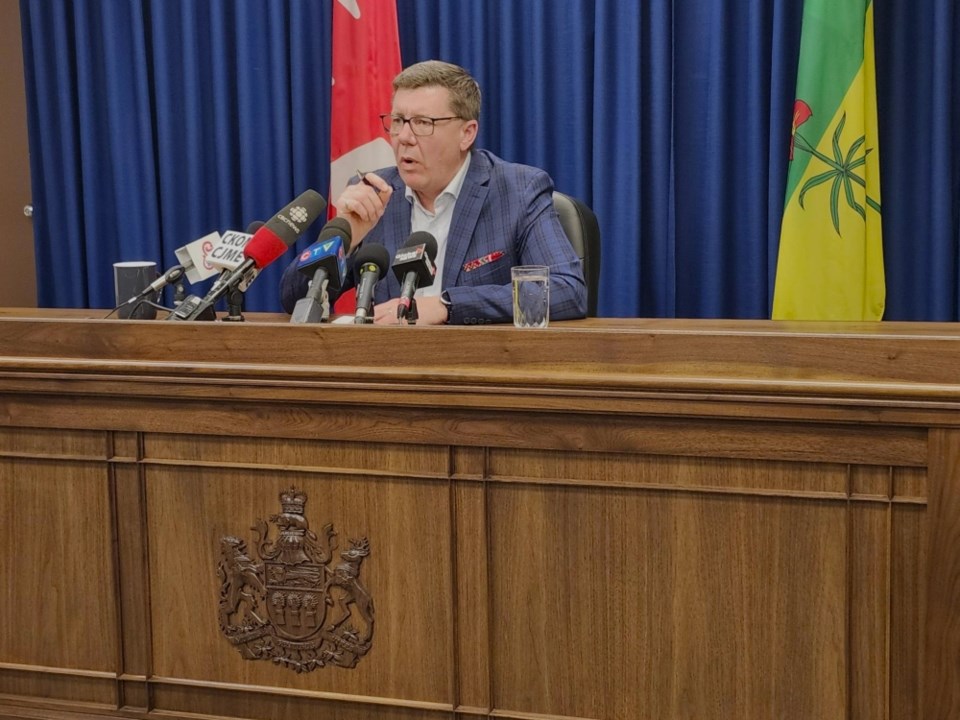SASKATOON — Premier Scott Moe said the provincial government is refocusing its existing resources to bolster border security to prevent illegal immigration. Since President Trump returned to the White House, he has begun sweeping immigration reforms. One of Trump's campaign promises was the mass deportation of those who entered the U.S. illegally.
Early this year, the provincial government introduced the Saskatchewan Border Security Plan, which gives the Ministry of Corrections, Policing, and Public Safety the power to mobilize Provincial Protective Services officers to work together with provincial policing services and federal agencies, boosting law enforcement’s presence near the border.
Moe said the federal government has also taken action and invested $1.3 billion to improve border security and strengthen Canada’s immigration system, which some people took advantage of in the past, to keep Canadians safe. Saskatchewan borders the U.S. states of Montana and North Dakota. The Big Muddy Valley in Southern Saskatchewan is part of the Big Muddy Badlands in Northern Montana.
“That being said, there has been a priority put on border security; illegal migrants may flow back and forth across the 49th parallel or in and out of North America through any of our partner ports, as well as our airports. In addition to that, the availability of drugs, specifically fentanyl, in our North American communities has also been identified as a challenge by the Trump administration. We've taken action in this space in our province,” said Moe during a press briefing on Monday, Feb. 3, at the Saskatchewan Cabinet Office.
“In addition to that, you've seen action taken in Saskatchewan with refocusing some of our existing resources and being able to build up to 95 available officers should any need arise along our 49th parallel. I would say the efforts of those law enforcement officers, whether the RCMP, our municipal officers or provincial law enforcement officers that we have, and all of them working together, are starting to show results.”
He said there have been several seizures of fentanyl, other illegal drugs and substances, and contraband that are happening not just at the Saskatchewan border but in different places in the country and that he is proposing the Canadian Border Security Agency become part of the Canadian Armed Forces, similar to what Mexico did at their northern border with the U.S. where Mexican President [Claudia Sheinbaum] sent military troops.
“It would provide two things immediately: One, provide the availability for troops along our border, the 49th parallel, between Canada and the U.S., thereby addressing concerns President Trump has raised. And two, would bring our CBSA funding under the military investment, ensuring that we are working towards our two per cent [North Atlantic Treaty Organization] commitment,” said Moe.
“I would say, [it] would be a great avenue for the Prime Minister [Justin Trudeau] to commit, and I would be the first to support this federal government in bringing the CBSA under the military that would provide troops the opportunity to be present on our 49th parallel and maybe even in our airports if necessary - be present to address concerns that President Trump has raised. I think Canadians share those very concerns as well. Anything we can do to remove fentanyl from our communities is viewed positively by the families I talked to.”
He added Trump had raised the issue of illegal drugs that are coming in, aside from his, in addition to his proposed 25 per cent tariffs. On Monday afternoon, the U.S. held back imposing the levy, which would have taken effect on Tuesday, Feb. 4, after talking to Trudeau. The U.S. is Canada’s largest trading partner.
“Our largest trading partner has raised that [illegal drugs] as being one of their primary concerns; that and border security. What we're seeing in early conversations is the Mexican government, by placing their troops alongside the border to stop the flow of not only fentanyl but illegal migrants,” said Moe, who added any contraband — drugs or firearms — and illegal immigrants crossing the northern or southern borders must be stopped to get into communities.
“That's why we had put several provincial police officers focusing on 20 to 50 kilometres near our border crossings. The border crossing is the responsibility of the CBSA and the government of Canada, and I would say that if they brought that in under the military, we could have our military present there as well.”
He added that Montana has state troopers and law enforcers who concentrate for 50 kilometres at the border, the same as on the Saskatchewan side, where provincial officers are stationed working alongside American and Canadian border officials to secure both sides quickly.
“Our commitment is removing drugs and not allowing them into our communities and our country. Repeatedly, there's been discussions around border security and the flow of fentanyl into all of our communities. Unfortunately, the overdose rates that we're seeing from fentanyl in Canada and Saskatchewan are far too high. I don't think they're far from what they see in U.S. cities,” said Moe.
“This is an opportunity for us to work together in clamping down, not allowing some of the precursor chemicals into our continent, let alone into our nation, so that we don't have the amounts of fentanyl in our communities harming our friends and all too often our family members. We should be working on this on behalf of Canadians, not just because President Trump has requested it.”




